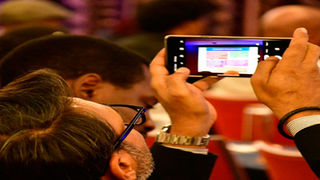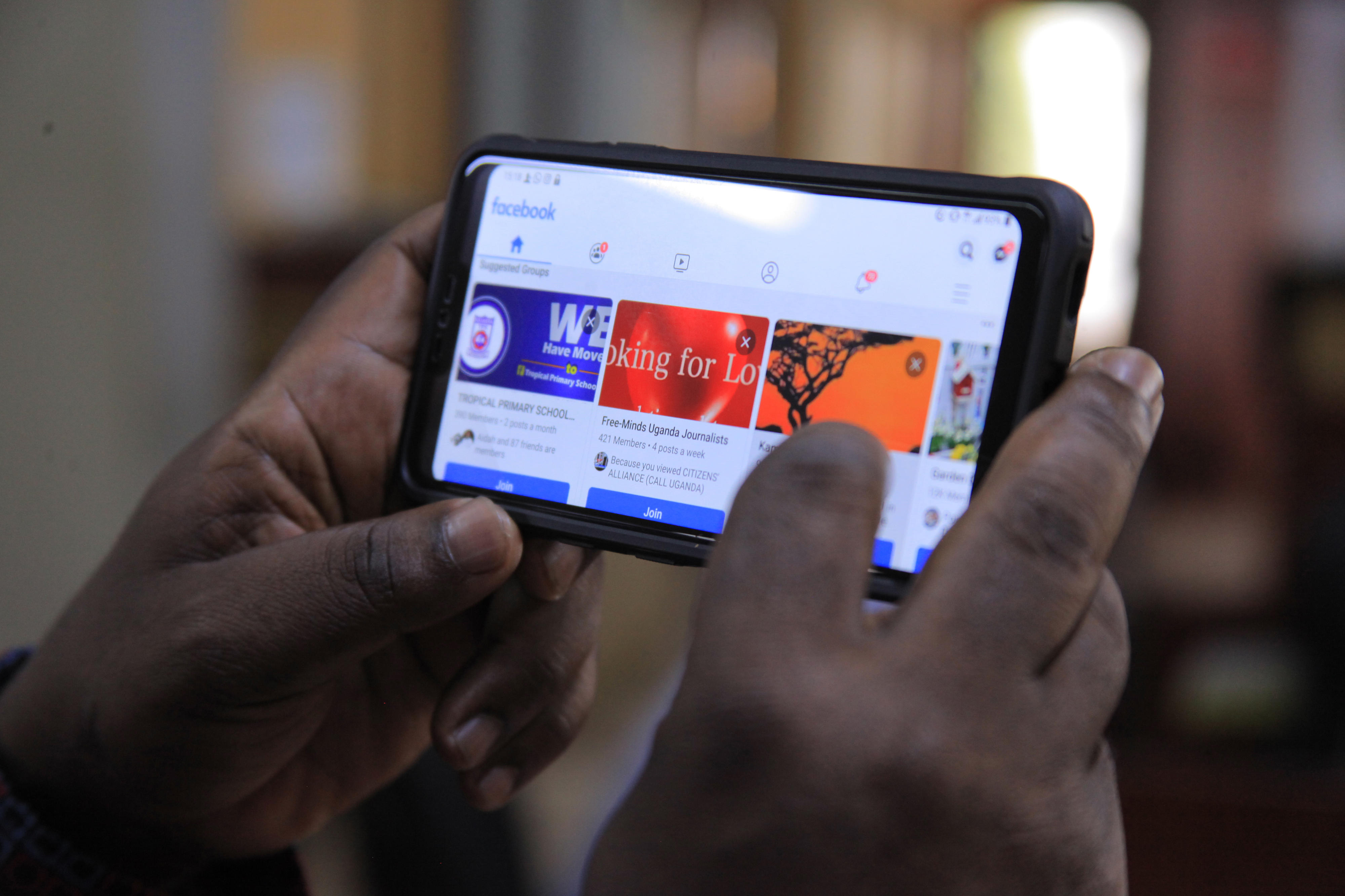
A man uses a smartphone to capture a picture. URA is now collecting some revenue is from online services like Amazon, Netflix and Facebook. PHOTO/ EDGAR R. BATTE
|Prosper
Prime
Behind the shift to online advertising
What you need to know:
- Companies are engaging with customers across a growing landscape of apps, social platforms, websites, blogs, third-party sites, and more.
- Uganda Revenue Authority has so far raised Shs700m in Value Added Tax (VAT) from Ugandan Facebook users who subscribe to the platform for digital marketing purposes.
Gone are the days when advertising would be done traditionally where adverts appeared in cabs, elevators, convenience store checkout lines, on the back of grocery receipts, at gas pumps, or in stadiums.
Now, advertising is taking a new shift. Everything seems to be pointing online. There is a dynamic shift from traditional marketing to digital marketing that cannot be ignored.
Marketers know that digital marketing represents the future of their business.
According to the February 2022 edition of the CMO Survey - a global marketing survey, they’re happy to allocate 57 percent of their budgets to digital marketing activities and are planning to increase spending by another 16 percent in 2023.
Could this shift signal the end of a century-long era of advertising? The remarkable advertising shift online. Today, if your brand is not largely focused on digital, you could be missing out on that action.
Companies are engaging with customers across a growing landscape of apps, social platforms, websites, blogs, third-party sites, and more, meaning the job of mapping the customer journey is getting more complicated.
Collins Hinamundi, digital monetisation consultant, says for businesses like media that depend on advertising for revenue; it is a bad thing. But for the businesses shifting their advertising online, it is a way to reduce their spending while extracting value from shifting demographics in Uganda.

A man searches for items on a website. More advertising budgets are moving into online spaces, leaving traditional media to scramble for a slice of that market. PHOTO/Isaac Kasamani
“As the rest of the country moves online, it gets more effective to reach people on YouTube, Google search and Facebook among other online platforms. These platforms have refined their tools to the level where a business can actually target its customers directly, unlike the other platforms which are mass market and you can’t be sure if your target customer saw your advert or not,” Hinamundi says.
Shifting audiences
The shift in audiences has more to do with a generational change, which has come with new consumption habits.
“I come from a generation before social media but right in the middle of the growth of the internet, I consumed news through newspapers, and didn’t trust anything until it run on TV or in a newspaper to be confirmed. But now you are dealing with a generation that has people who trust and believe social media influencers like Lumbuye over credible media houses in spite of various fact checks disputing his claims, he still commands an audience,” he recounts, noting that you find a TV platform only managing to get 5,000 views on their social media platforms while characters like Isma Olaxes easily double that within a minute online.
Ensuring visibility online is another phenomena and social media or digital media die-hards are in all spaces.
Hinamundi says: “When you go online, make sure you define why you are there and who you as a business, are looking to talk to. When you lock those answers in, the content you create, the adverts you run and how you target them, will be more effective and have better returns.”
Online impedes quality
In terms of quality, however, he elucidates that advertising shifting online, has meant a drop in quality advertising, a flooding of fake and fictitious products to online audiences, things traditional advertising platforms would gate-keep or be held accountable for; Google can’t (at least not yet) be held accountable for fraud that occurred out of an advert it was paid to run on YouTube.
Secondly, the ease with which you can get online, also means businesses have to spend more on content to get noticed outside the millions of poor-quality content running on these platforms.
Costs
In terms of cost, it is up to the business and its budget because these platforms will take anything above one dollar a day.
He adds: “The key cost becomes content creation but even that is getting cheaper with Artificial intelligence (AI) platforms that can turn text to video or audio among others. This implies that the costs are low and they keep getting lower.”
Rachel Calnan, digital manager, concurs that the advertising shifting online is a great innovation.
“It is not bad for either part of the audiences or vendors get to reach people in real time, consumers get the convenience of shopping in their own comfort,” Calnan says adding that by posting great relatable content or boosting My posts to reach the desired audiences.
She adds that as a consumer some are fairly priced while others may be on the higher end.
Online revenue
While releasing half year revenue performance Financial year 2022-23, Uganda Revenue Authority (URA) indicated that although there was Shs98 billion shortfall for the half year largely coming from international taxes in the areas of the fuel levy and VAT on imports among others; which was perceived as difficult, meanwhile, some revenue is now being collected from online services like Amazon, Netflix and Facebook.
“Movies on Netflix, online advertisements, any form of marketing that you do online, we are getting VAT from that transaction value and we are collecting. Things like online meetings, Zoom meetings, and the likes of Amazon and Google, there are a number of things that we are getting and this is okay. Face Book sources income from Uganda and so far, we have collected about Shs700 Million,’’ Sarah Chelangat, URA Commissioner, domestic taxes says.




